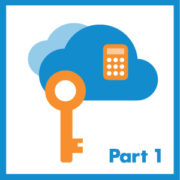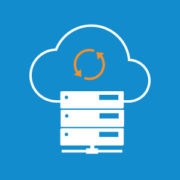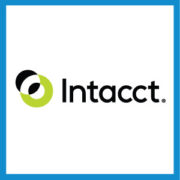Eight Things to Look For in an Accounting Software (Part 1)
When you’re outgrowing an entry-level accounting software, you know what you don’t want: The headaches, hassles, and time drains that come from the manual processes and underwhelming functionality. However, as you look toward a new solution, it’s important to know what you do want from your next solution.
In this two-part series, we look to share with you some of the important things you should be looking for in an accounting system built for your business as it grows and matures over the next five, ten, or twenty years. In part one, we will be discussing the importance of a solution built for your industry, why you need to be thinking long-term, how to get the information you need when and where you need it, and how to get the reports you need based on the business drivers you choose.
In part 2, we will be talking about why you need something that’s easy to learn, ready to integrate, ready to help you, and built for the modern business. See Part 2 of What to Look for In Accounting Software here.
1: Industry Focus
For growing businesses, you may have been able to survive at first with a generalized product that could handle the basic needs of your business. But as you continue to grow, you notice that you need the numbers and workflows built around your business—a professional services firm needs effective hours tracking and expense management while a distribution firm needs insightful purchasing and inventory management while a franchise needs multi-entity design.
While there are few niche accounting software options, solutions like Intacct have the focus and resources to design their solutions around your specific industry, thanks in part to their best-of-breed design (focused solely on accounting—plays well with complementing applications), experience in the middle market (nearly two decades), and highly effective product teams who know your industry and its needs.
Add on top a network of partners like us, and you have the design, knowledgeability, and support to use the software to the best of your abilities.
2: Scalability
One of the biggest mistakes that a company can make is to focus too much on the present and ignore the future. It’s why newspapers are failing (sad!) and the term digital disruption is actually a thing—companies ignoring possible changes in the future that ultimately sink them.
However, you should always be thinking growth, and shouldn’t be looking for an accounting system that will only suit you for the next year or two. An accounting software should be with you for at least the next five years and should be able to grow with your business.
Seek out an accounting software that supports your business growth and can prove it—with case studies of businesses sized similarly to you today and where you intend to be in a 5-, 10-, or 15-year period.
3: Immediacy/Automation
One of the first signs that you’re outgrowing your current accounting software is that it’s taking longer and longer to close your book each month and that it’s becoming harder and harder to generate the reports you need in a timely manner.
This is why you need to ditch the spreadsheets, and take full advantage of automation in order to stand tall during a period of growth. A few things you should look for:
- Real-time GAAP, IFRS, FASB, Sarbanes-Oxley, regulatory, and compliance reports with over 150 included templates that give you the capability to drill down to the transaction level
- Multiple ledgers (AR, AP, order management, and cash management ledgers) that can process transactions independently without degrading GL performance, and reduce the time it takes to close your books and report on business results
- Multiple books, such as simultaneously keeping books on an accrual and a cash basis, to allow you to easily report business results to multiple stakeholders based on their needs and report preferences
- Custom workflows and system access so that you can maintain separation of duties, match an accounting workflow to your organization’s business processes, or provide read-only access to stakeholders like executives and auditors
Learn more about the dangers of spreadsheets and the importance of automation here.
4: Insightful Reporting
As you grow, it’s likely that you have more people to whom you must answer. It also means you can’t be wasting time and money waiting on a third party to code custom reports because of the immensely complex reporting needs of some accounting software or ERP options.
However, thanks to automation and point-and-click reporting in Intacct, you can have answers to questions from sales, customer service, board members, or investors in minutes—not days. Better yet, you can customize these reports based on your business drivers, specific metrics or workflows. Learn more about reporting functionality in Intacct here, or get even deeper understanding of it by reading this data sheet.
Conclusion: Finding What’s Right for Your Business
As an Intacct Partner, rinehimerbaker has the skills you need to learn, implement, and operate your new accounting software in the cloud. Learn more about Intacct, as well as our services for businesses like yours by contacting us.











Leave a Reply
Want to join the discussion?Feel free to contribute!